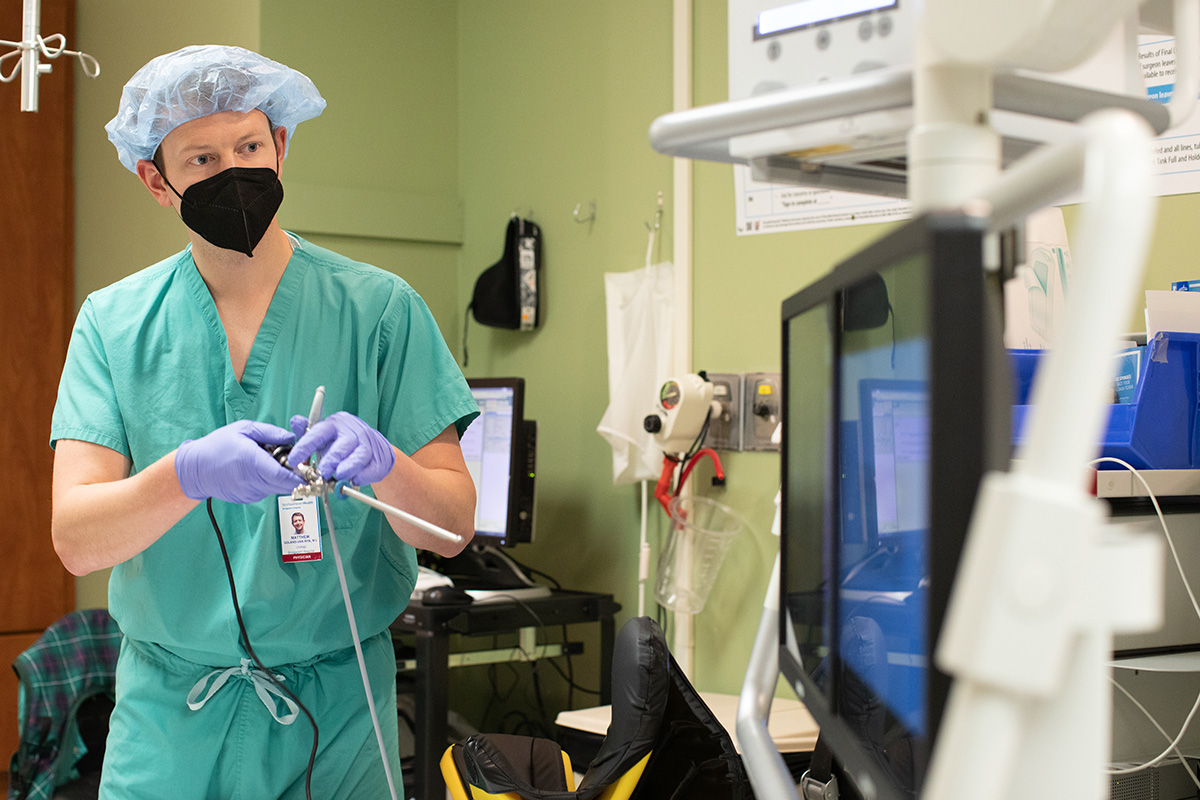
Popular Locations
- Outpatient Surgery - Bridgeport Hospital
- Park Avenue Medical Center
- Primary Care Center - Bridgeport Hospital

Published April 03, 2023

Women have equated the pain to labor and childbirth. Men have described it as the worst pain of their life. What can cause such a horrible pain? For some people, the answer is kidney stones.
Roughly one million Americans develop kidney stones each year. Kidney stones, which can range in size from a grain of sand to a ping pong ball, are usually found in the kidneys or in the ureter, the tube that connects the kidneys to your bladder. They are made up of a concentration of calcium, uric acid and other substances found in urine that form into solid masses, which can block the flow of urine.
“Kidney stones only cause pain when they block the kidney,” said Matthew Goland-Van Ryn, MD, a Northeast Medical Group urologist at Bridgeport Hospital. “If the stone is not blocking the kidney, you wouldn’t even know you had it, which is how they grow.”
According to Dr. Goland-Van Ryn, kidney stones are extremely common and are slightly more prevalent in men than women. “Common risk factors include obesity and diabetes, which are the most prevalent medical risk factors,” he said. “There is also a strong genetic component; both men and women with a family history of kidney stones are at significantly higher risk for developing them during their lifetime.”
How do you know if you have a kidney stone? “The most common symptom is what is called a colicky pain in the flank or mid-back,” Dr. Goland-Van Ryn explained. “If you were to put your hand on your back where your lowest ribs are, that’s where people typically feel pain. The pain can sometimes spread around the outside of the abdomen down into the groin. It’s a severe, sharp pain; it will go away suddenly and then it will come back, and that’s why it is called ‘colicky.’
“Once a stone starts to pass, you can get some urinary symptoms as well,” Dr. Goland-Van Ryn noted. “Increased frequency in urination, increased urgency and even some blood in the urine are all typical when passing a stone. Those symptoms usually occur as the stone pushes its way down to the bladder.
“Some people will have stones as small as 2 or 3 millimeters that cause symptoms, although a stone of that size almost always passes on its own,” he said. “A 5-millimeter stone, which is about the size of a BB [gun pellet], is about as large as most people can pass, although by no means is that always true.”
Severe pain will usually be the driver that signals when medical intervention is needed. “Someone who has a stone for the very first time will get a really debilitating pain and they will go to the emergency room, and that’s when they will undergo a CT scan of the abdomen and pelvis, and that’s how the diagnosis is almost always made,” Dr. Goland-Van Ryn said.
Treatment depends on the size and location of the stone. For patients requiring surgery, several minimally invasive procedures are available and include:
All of these procedures are performed with the patient under anesthesia.
Dr. Goland-Van Ryn recommends those at risk for kidney stones limit their daily salt intake to 2,000 mg of sodium – or approximately one teaspoon of salt – and animal protein to less than 70 grams a day, which is equivalent to a serving of meat the size of a deck of playing cards. But drinking water is the number one thing people can do to prevent kidney stones.
“I can’t stress it enough,” he said. “I tell every single person who forms stones that they should be drinking 100 ounces of water a day, which is a lot – it’s about three liters. By increasing your water intake to this level, you can very effectively dilute your system and prevent stones from forming.”